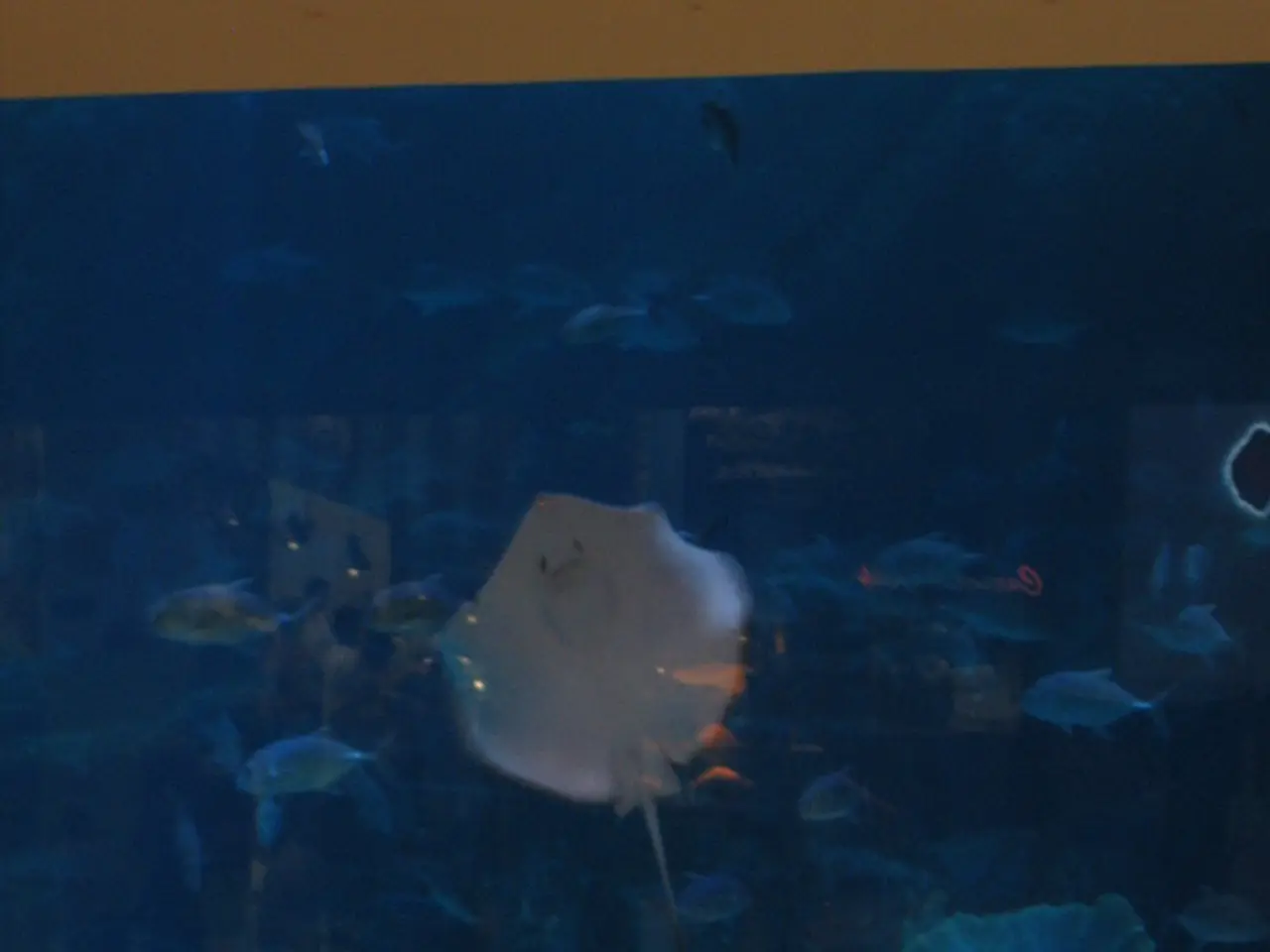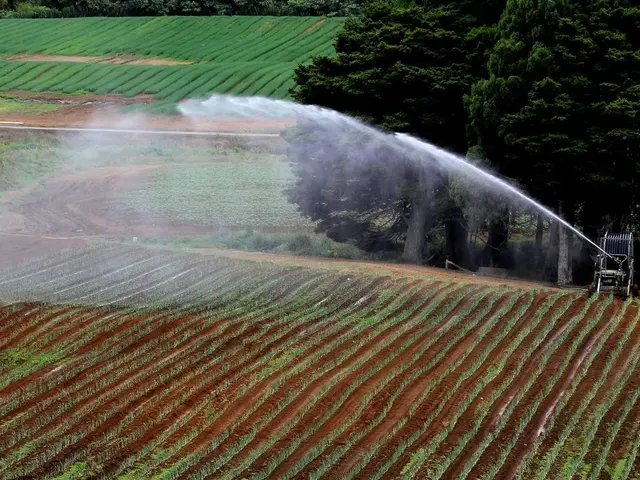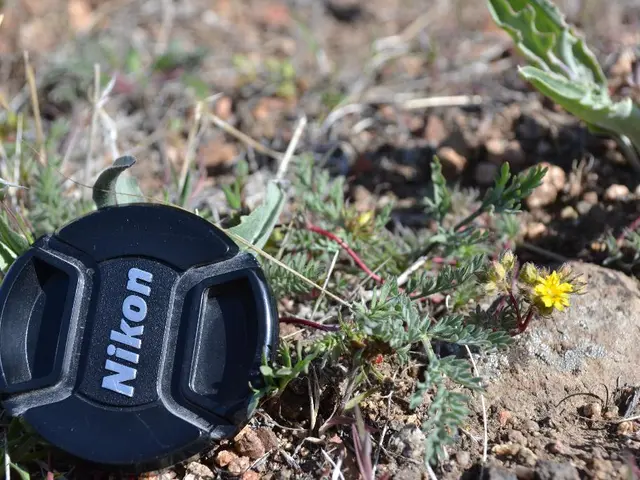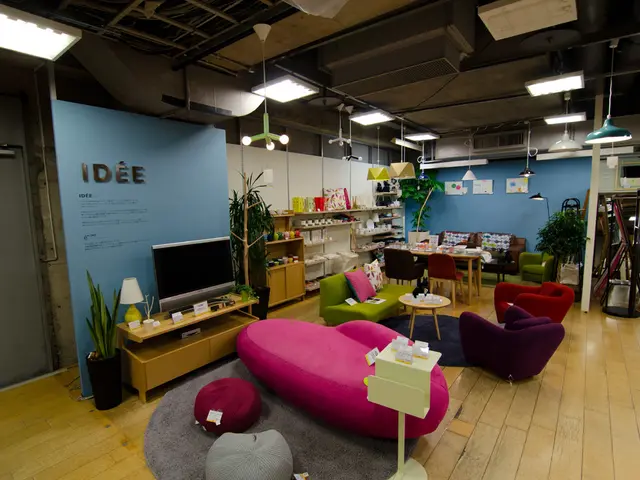Constructing Your Own Aquaponics Setup: Cultivating Produce with Fish Reservoirs
In the quest for sustainability and self-sufficiency, home gardening enthusiasts are turning to innovative methods, and one such approach is aquaponics. This closed-loop system combines aquaculture (raising fish) with hydroponics (growing plants in water) to create a symbiotic environment that benefits both fish and plants.
When setting up a DIY aquaponics system, consider the following key steps:
1. **Select and Prepare Your Fish Tank** Choose a food-grade, round or oval tank, such as HDPE or fiberglass, with a bottom drain for efficient waste removal. The size of the tank depends on the species of fish you plan to keep, with smaller sizes suitable for home setups.
2. **Set Up the Grow Beds** Use media-based grow beds filled with gravel or clay pebbles for simplicity, or floating rafts (NFT or DWC) for higher yields. Ensure the grow beds allow for good root aeration and stay cool.
3. **Install Biofilter** Add a biofilter containing nitrification media like K1 media, bio balls, or ceramic rings. This is crucial for converting fish waste ammonia into nitrates, which plants can use.
4. **Water Circulation and Aeration** Set up water pumps to circulate the water constantly, aiming for at least twice the tank volume per hour in flow rate. Use air pumps with air stones or ceramic diffusers to maintain high dissolved oxygen levels.
5. **Monitor Water Quality** Regularly test water parameters such as ammonia, nitrite, nitrate, pH, and hardness. Maintaining pristine water quality is vital for fish health and nitrification.
6. **Add Fish and Plants** Stock your tank with suitable fish (e.g., tilapia or koi) and start with hardy plants like lettuce or herbs in your grow beds. Use net pots filled with pebbles to hold plants securely in place.
7. **Cycle the System** Allow the system to cycle so beneficial bacteria develop fully before introducing the full fish load. This stabilizes ammonia and nitrite levels.
8. **Provide Lighting and Environmental Control** If indoors, set up appropriate grow lights above plants. Maintain water temperature suited to your fish species, as some require cooler water and may need a water chiller.
9. **Maintain and Troubleshoot** Regularly check for common issues such as low oxygen, poor circulation, and imbalanced nutrients. Adjust aeration, flow rates, or fish/plant stocking density as needed.
By following these steps, you can create a balanced and thriving aquaponics system at home. This setup allows fish and plants to thrive in a symbiotic environment, making aquaponics both sustainable and productive for home gardening.
**Key Components:**
| Component | Details/Specs | |---------------------|-----------------------------------------------------| | Fish Tank | Food-grade, 500+ liters (size based on fish species) | | Grow Beds | Media-based (gravel, clay pebbles) or floating rafts | | Biofilter | 60–100 liters media (K1, bio balls, ceramic rings) | | Water Pump | Flow rate ≥ 2x tank volume/hour | | Aeration | Air pump + air stones; maintain high dissolved oxygen | | Water Testing | Ammonia, nitrite, nitrate, pH, hardness, oxygen | | Lighting | Natural or grow lights (LED, fluorescent recommended) | | Fish and Plants | Suitable species; start with hardy plants like lettuce |
This approach ensures a balanced and thriving DIY aquaponics system at home. With aquaponics, you can produce fresh vegetables and healthy fish right at home, making it an exciting and rewarding project for both beginners and experienced gardeners.
- Incorporating innovative home gardening methods like aquaponics contributes to sustainable and self-sufficient lifestyles, allowing the cultivation of both food-and-drink and home-and-garden produce.
- To optimize productivity and effectiveness, consider utilizing smart-home-devices that enable automated water circulation and lighting systems for your aquaponics setup, enhancing both your gardening experience and technology integration.
- Gardening enthusiasts may find it beneficial to leverage gadgets such as pH meters and nitrate test kits to monitor water quality parameters and maintain optimal conditions for the survival of both fish and plants.
- By embracing sustainable living practices through aquaponics, gardeners can promote responsible use of food-and-drink resources and maximize their living space, transforming their homes into a beautiful oasis of home-and-garden bounty.




